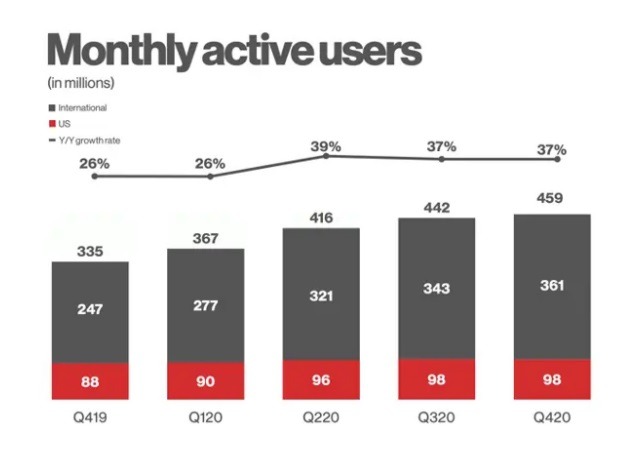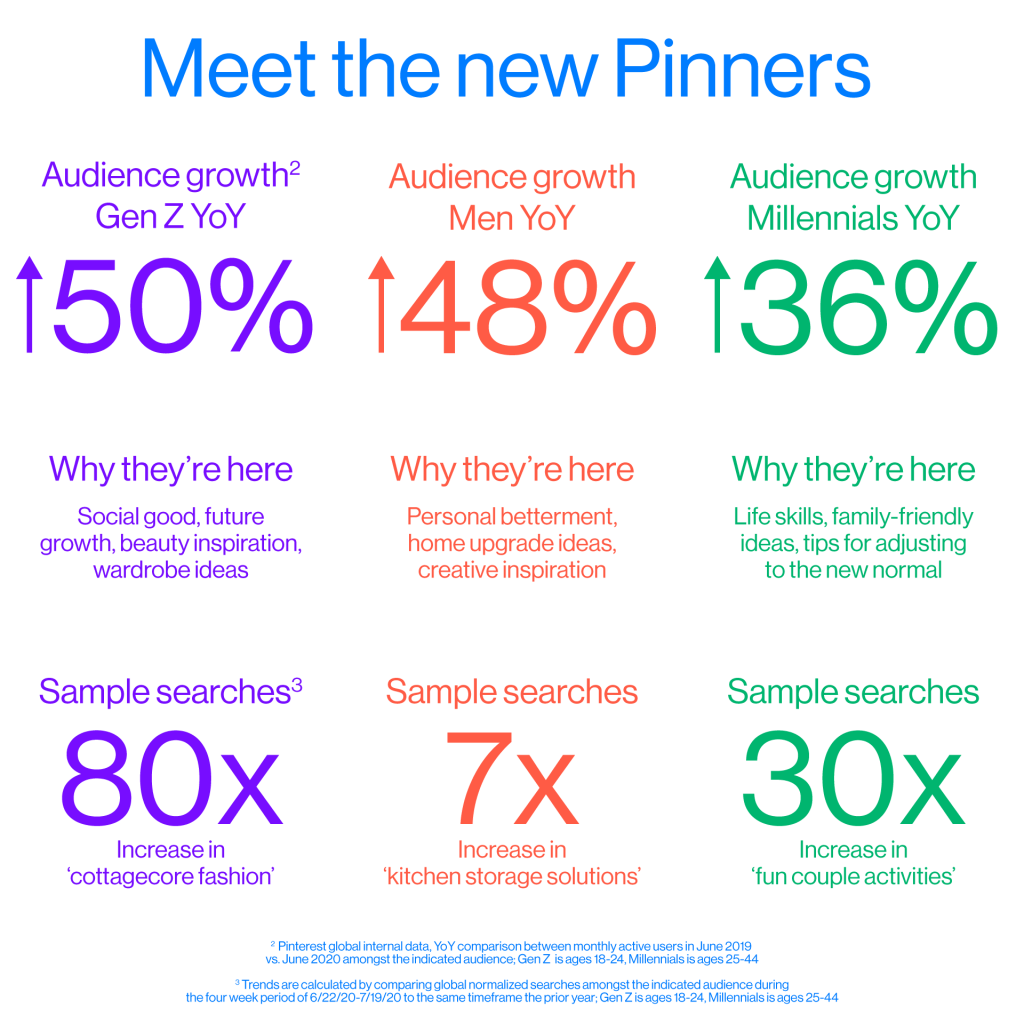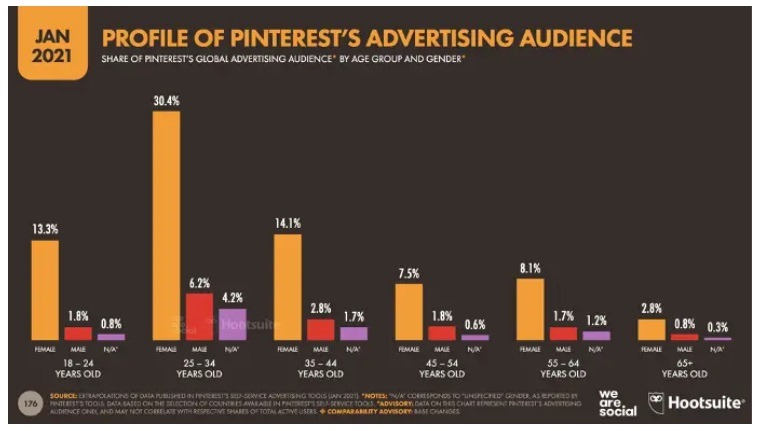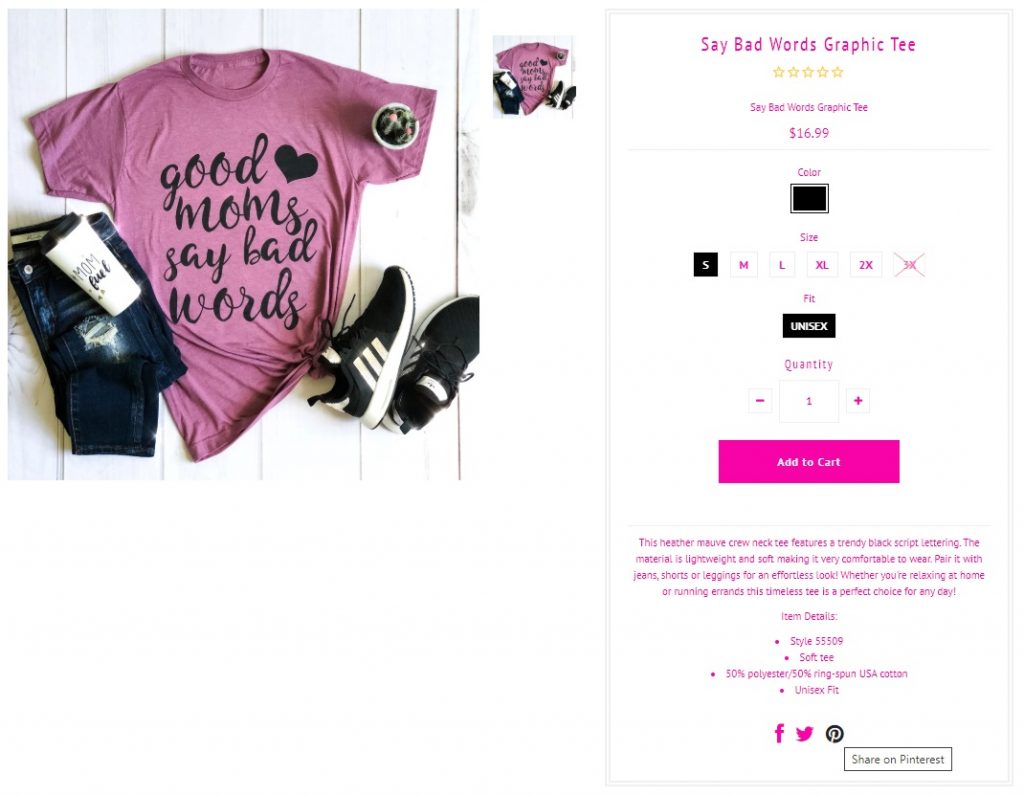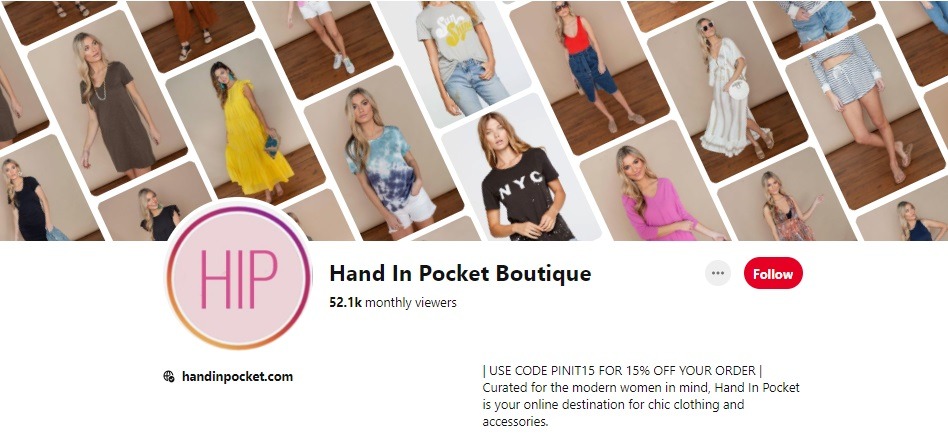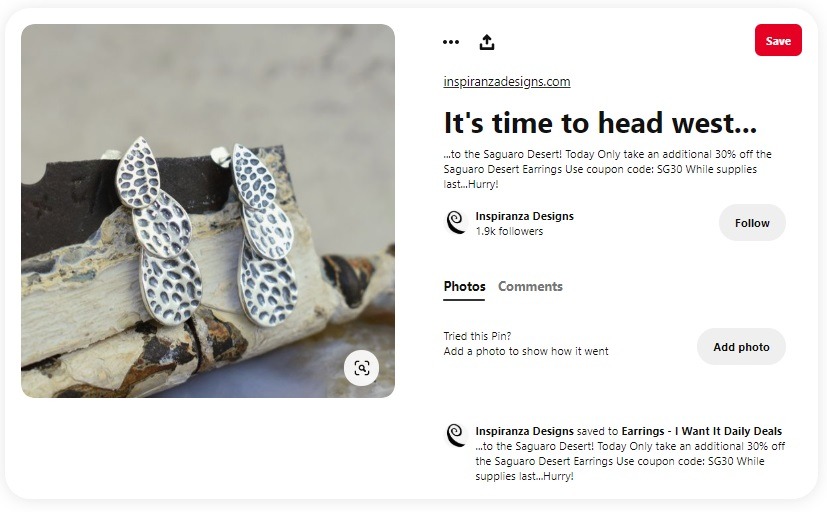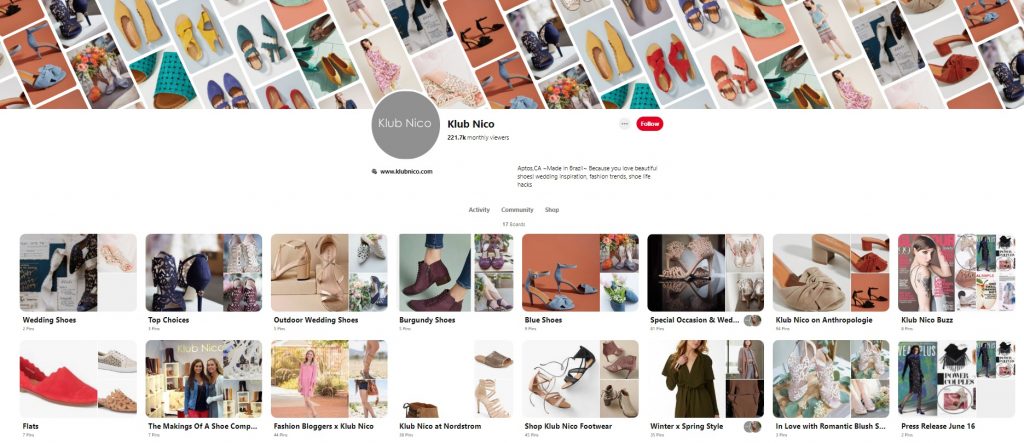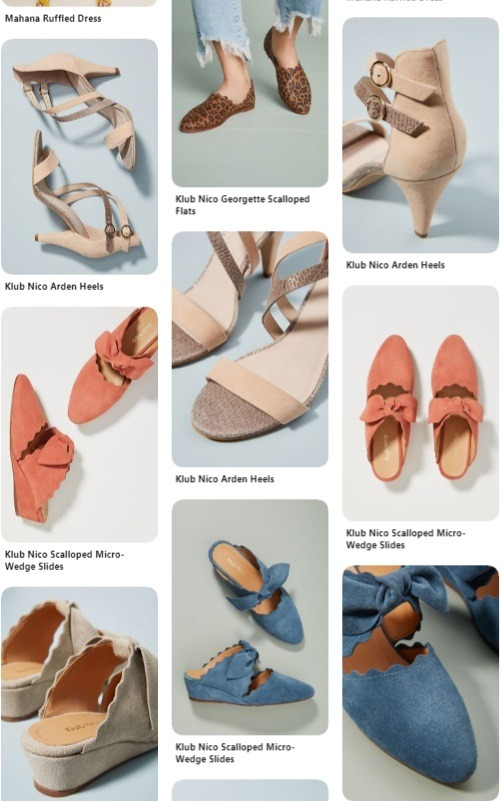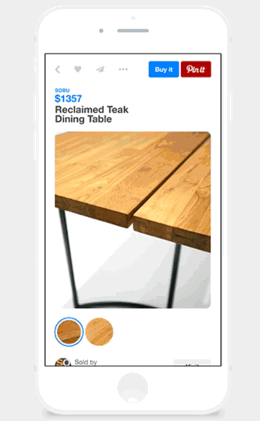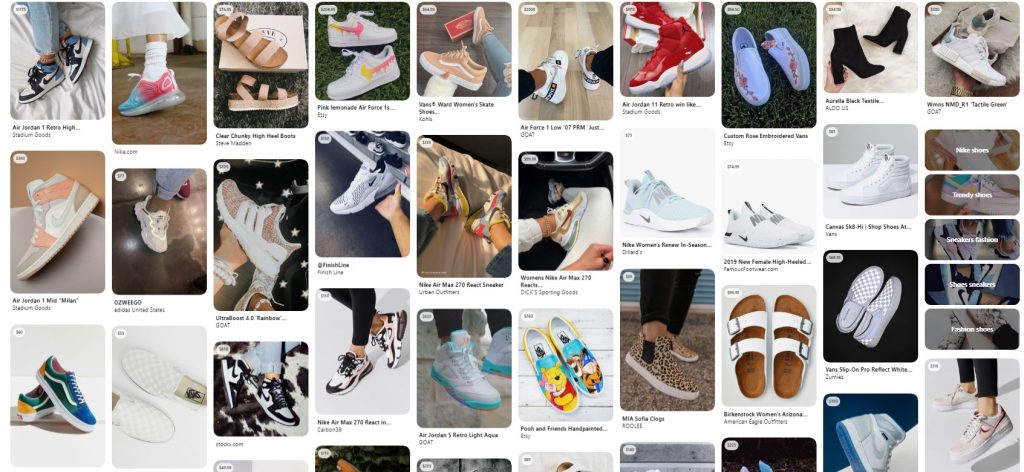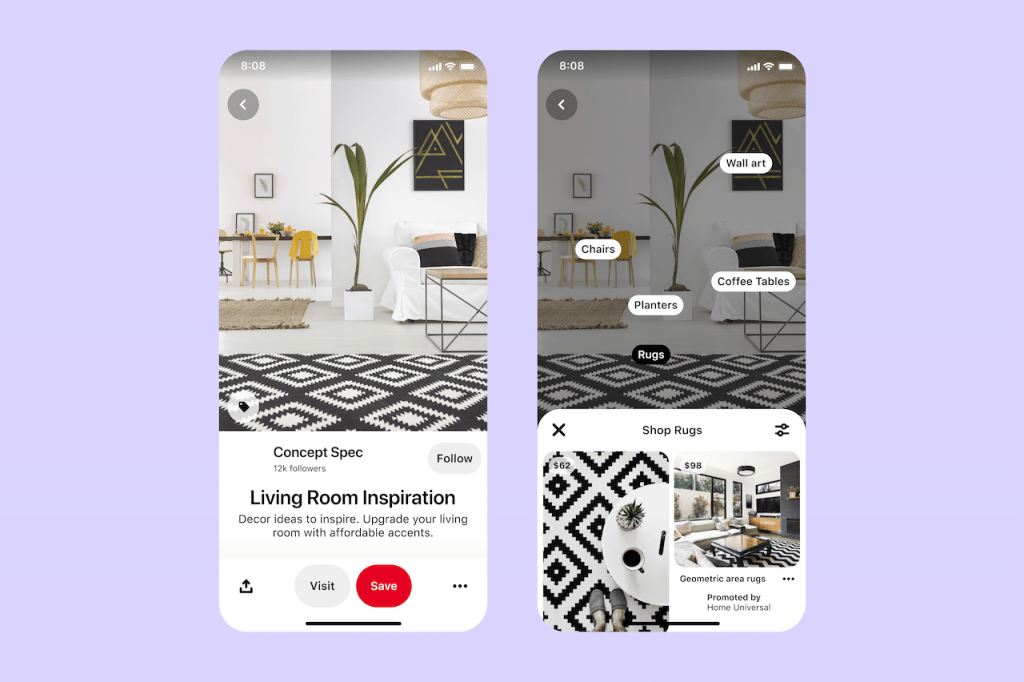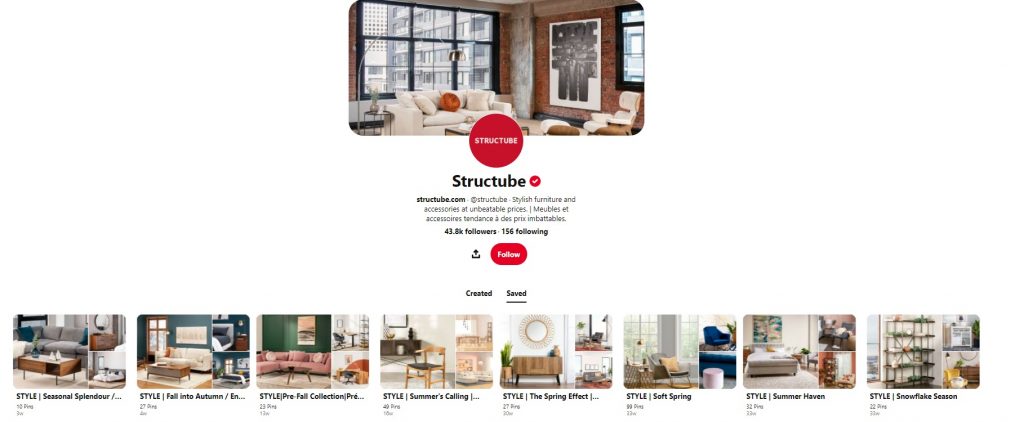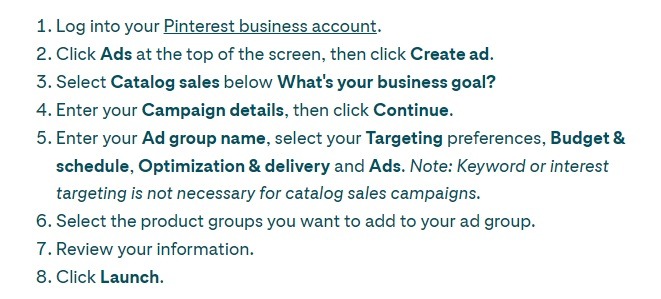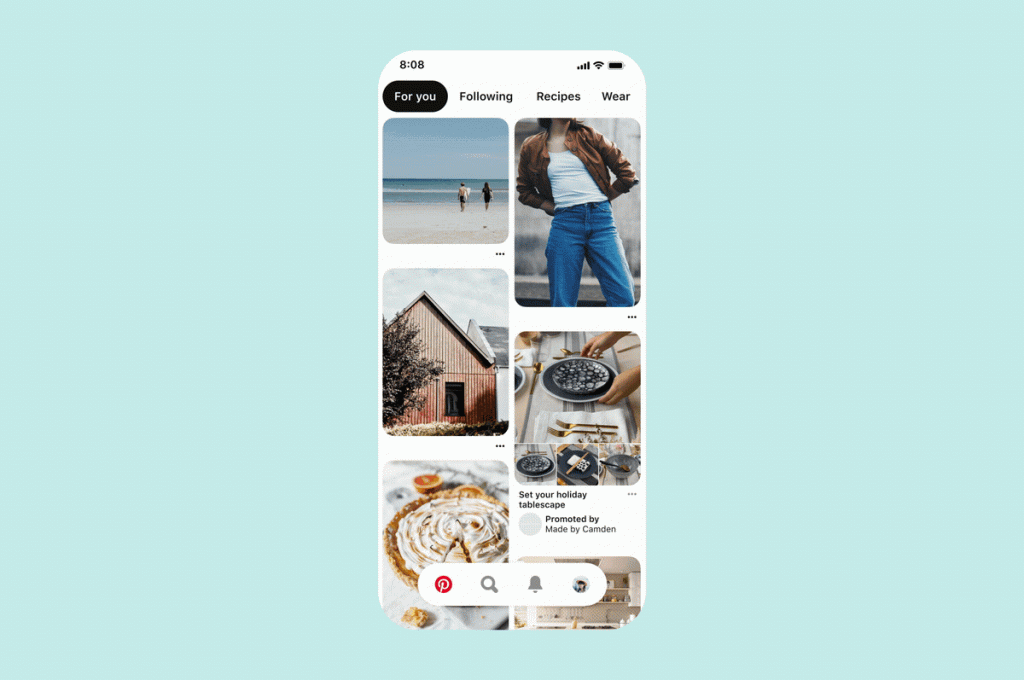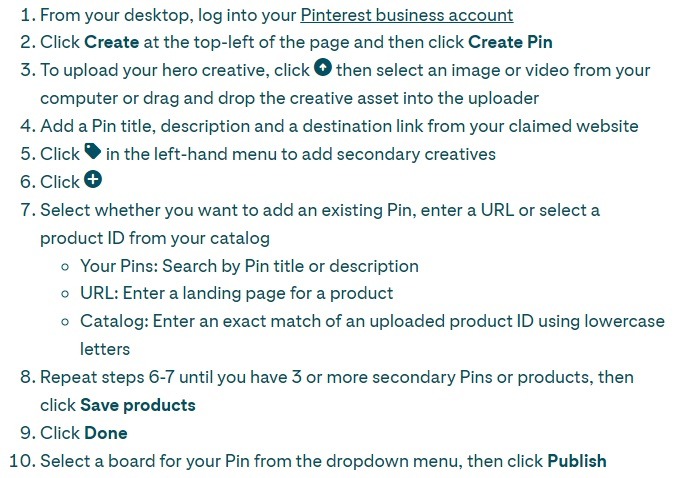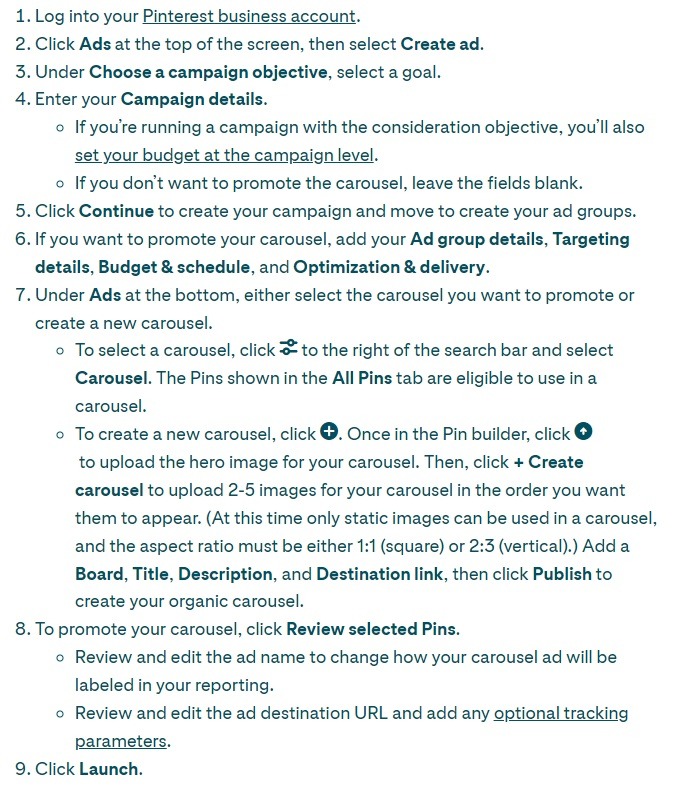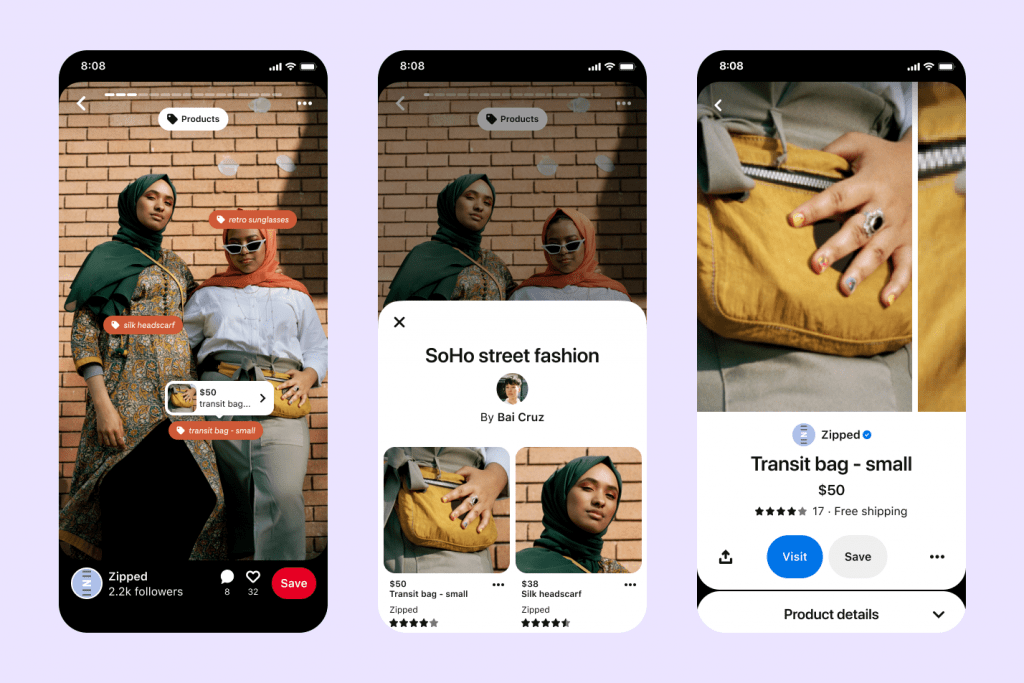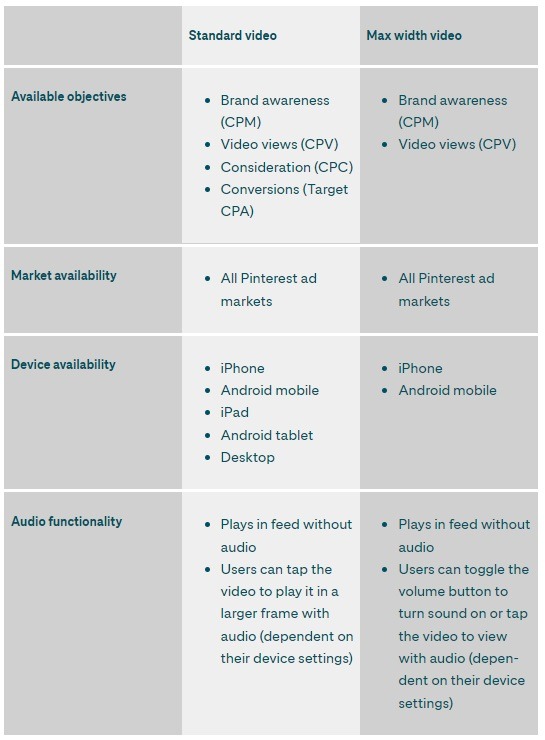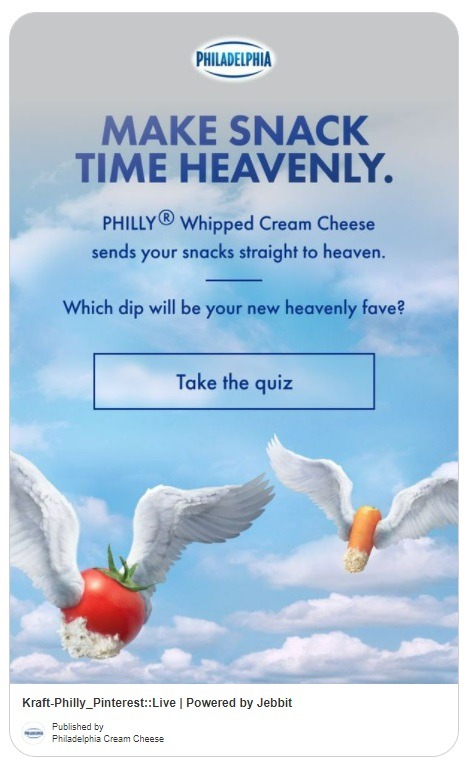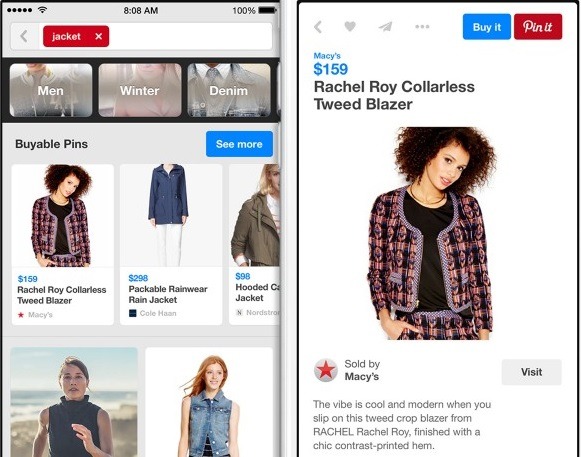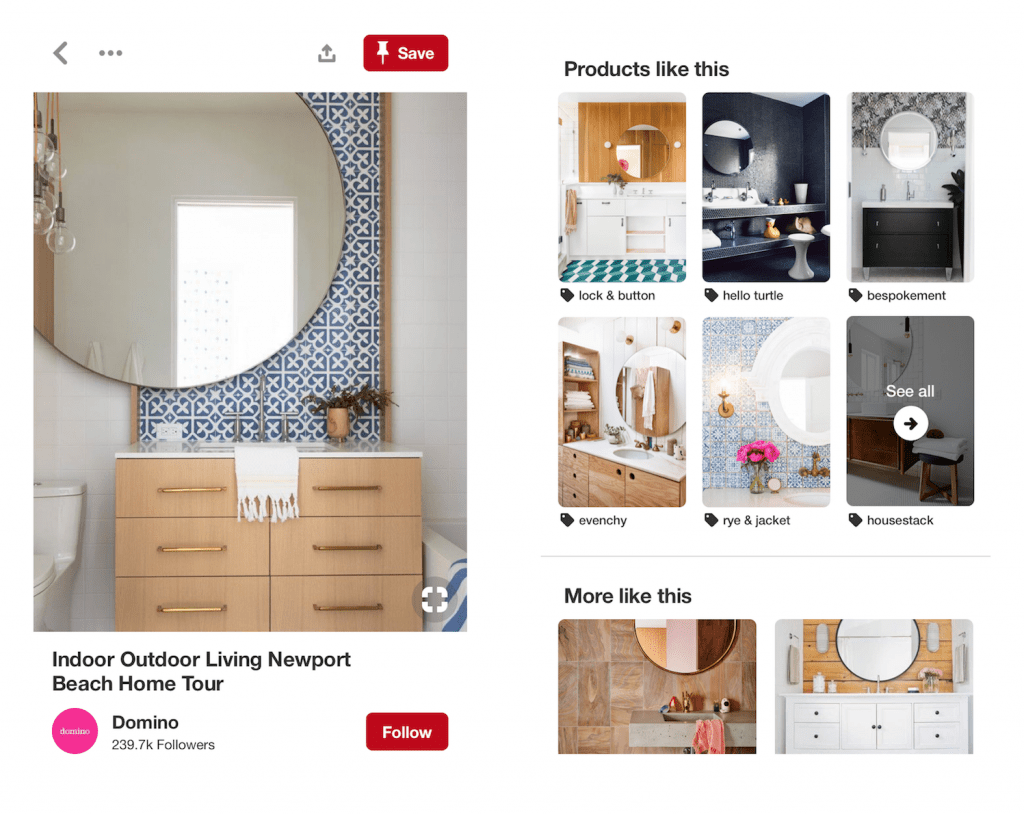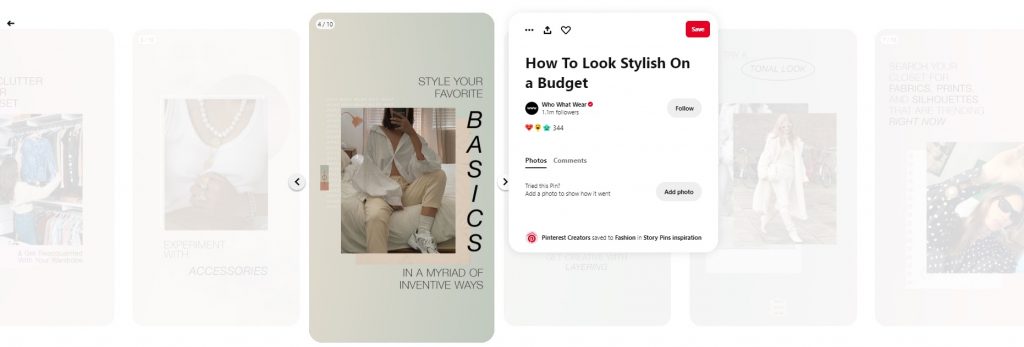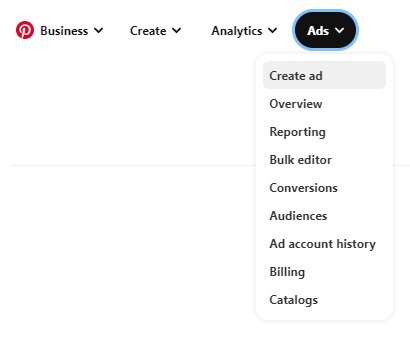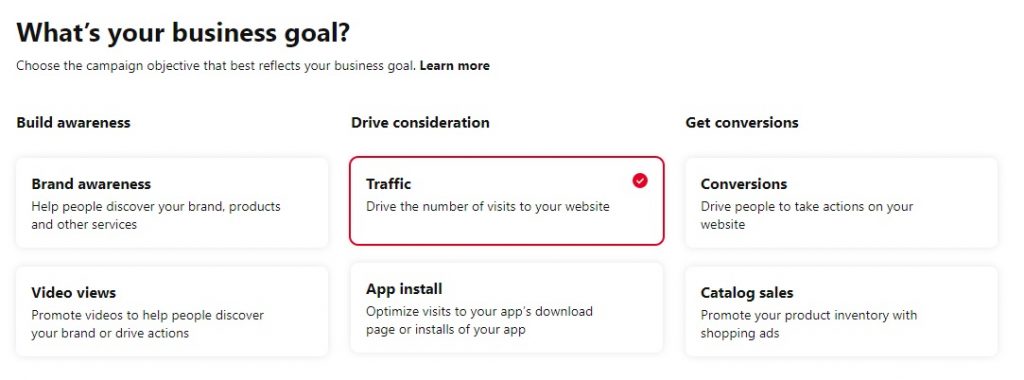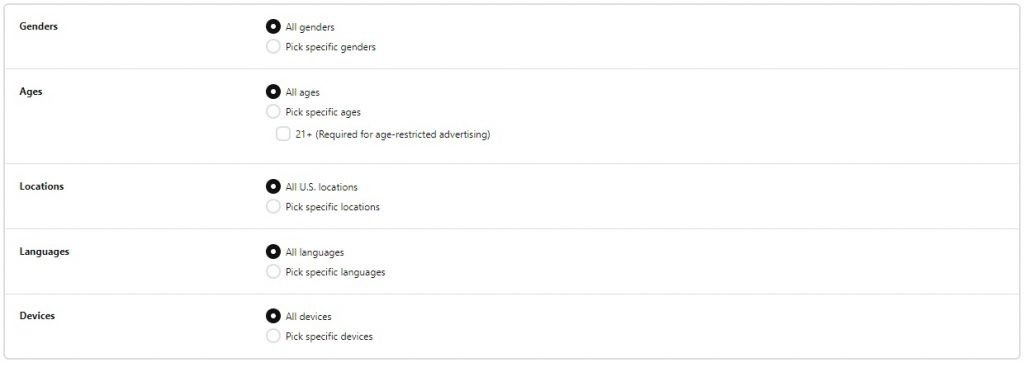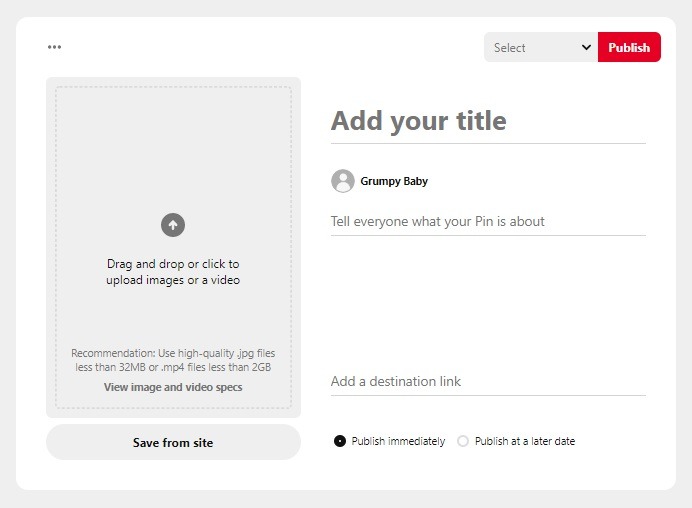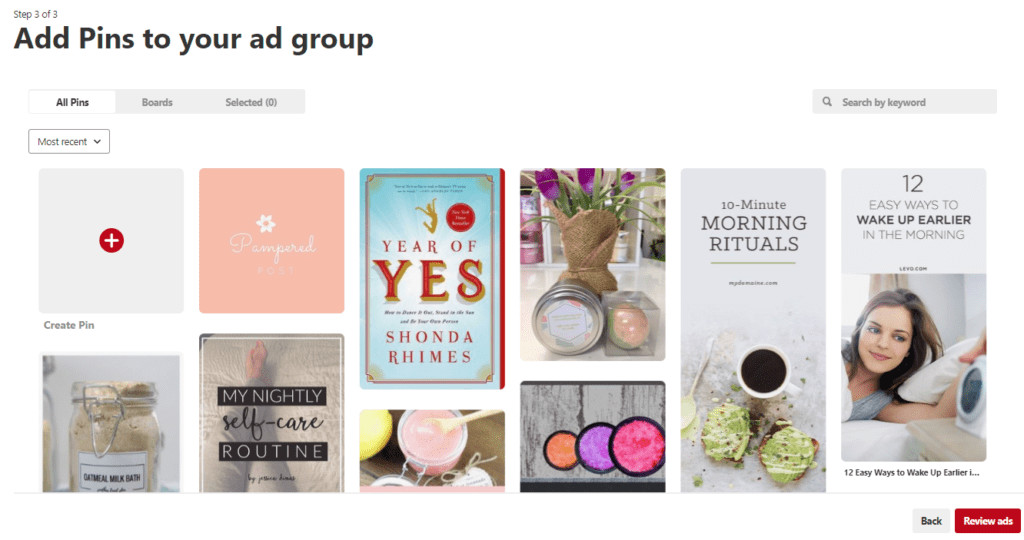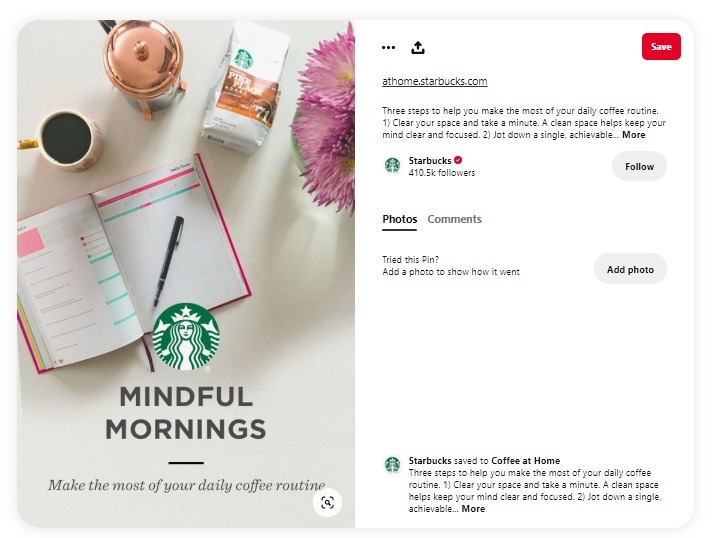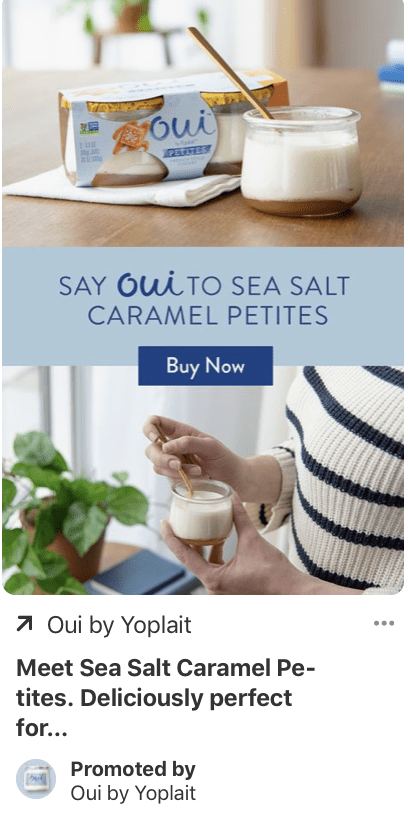When it comes to Pinterest ads for eCommerce, the number one thing you should consider is how Pinterest fits into your overall marketing and SEO strategy.
Pinterest has a lot of potential for online store owners: from increasing reach and conversions and boosting organic marketing efforts and SEO to taking your store blog and content marketing strategy to pro level.
However, it doesn’t stop there – Pinterest PPC is well worth the effort of testing it as part of your overall eCommerce marketing strategy.
To give you just a taste of its potential: After their Pinterest campaign, 90% of Jonas Paul Eyewear’s website traffic came from Pinterest. Their campaign also resulted in a 65% higher average order value.
Their secret?
- Focusing on the digital marketing platform as a whole, like you would with other platforms such as Instagram and Facebook
- Using the right ad type for their brand, market, and objective
So, are Pinterest ads worth the effort? The short answer – for the right eCommerce brand – is most definitely!
Pro Tip: Looking to add Pinterest to your expert eCommerce marketing strategy? Chat to us about Traffic Booster’s Enterprise, which includes TikTok ads, Pinterest, and other customized PPC campaigns.
In this Pinterest ads for eCommerce guide, we cover everything you need to know to create an optimized Pinterest advertising strategy, including the following:
Pinterest Ads for eCommerce
Should eCommerce Brands Be Testing Pinterest PPC?
Trailing behind Instagram, Pinterest is the sixth-largest social platform in the US and 14th overall, and has 444 million active monthly users. In fact, monthly international user figures have been increasing year on year and grew by 46% in 2020 alone.
[Source: Hootsuite]
Add that to the fact that there are over two billion text-based and guided searches on the platform each month, and that 77% of weekly Pinners have discovered a new brand or product on Pinterest.
40% of Pinterest ads audiences are male and 60% are female, with the number of male Pinners increasing by nearly 50% by the beginning of 2021.
[Source: Pinterest]
In a nutshell, there are plenty of reasons to test this platform. However, it’s important to be aware of user demographics to ensure that Pinterest is suitable for your eCommerce store.
Here’s a short audience overview of potential reach from Pinterest Ads from Hootsuite:
Pinterest Ad Audience Statistics
- 82% of people use Pinterest on mobile
- Pinterest ads can reach 200+ million users
- 30.4% of Pinterest’s ad audience is represented by women aged 25–34
[Source: Hootsuite]
How does this affect your Pinterest marketing?
Let’s say you have a successful online clothing fashion brand whose market matches that of the most significant percentage of Pinterest users: women aged 24–35.
Targeting and engaging with that demographic on Pinterest could be hugely successful. However, If you were selling to the 65+ demographic, this digital marketing platform probably wouldn’t be as fruitful.
Bonus: Important Pinterest Fashion Stats for Clothing Stores
- 35.5 million Pinners engage with fashion content
- 83% of weekly fashion Pinners have made a purchase based on seeing fashion Pins from brands
So, Why Use Pinterest Ads for eCommerce?
- Ads on Pinterest can help you sell products. First and foremost, promoted Pins can help you reach new shoppers who are actually searching for product ideas in specific niches.
- With the introduction of product campaigns such as the buyable Pin, shopping ad, or personalized collection ad, Pinterest advertising has a lot of options specifically for pushing online product sales.
- If you’re looking for a more visual way to build your eCommerce brand image, Pinterest can be very effective. Promoted Pins can therefore help you build brand awareness and establish your brand image to a host of new potential shoppers.
- Pinterest can drive more traffic to your online store. Not only do Pins make you and your products easier to find on the platform, but each Pin links back to a URL. If done correctly, Pinterest SEO can go a long way toward your SEO efforts on and off the platform. You can read more about how to boost Pinterest SEO here.
- Incorporating Pinterest into your marketing strategy will help keep your brand competitive. Why? Because there is a big chance that your competitors are already utilizing the platform.
- Pinterest will give you access to an untapped pool of potential customers. According to Pinterest, 77% of its users have discovered a new brand or product on the platform at one point or another. This means that if your brand or content isn’t there, you’re missing out on many potential customers.
- Last but not least, Pinterest content and ads will help you establish your brand as an authority in your niche. Pinterest is an inspiration platform for people looking for advice and ideas. Therefore, by supplying high-value content, you can position your brand as a niche expert.
Laying Your eCommerce Pinterest Marketing Foundation
The first thing you need to do before investing in Pinterest ads for eCommerce is make sure you’ve built a winning marketing strategy.
Important Note: If you are already using Pinterest but are looking for the best Pinterest ads for eCommerce and optimized hacks, you can jump to the next section here.
Like with any social platform, this means starting with your account setup, content planning, and website integration. This will ensure you are creating a well-oiled, traffic-driving stream – from all angles – from the ground up.
Here are some must-have basics that every eCommerce seller should do to ensure they are set up for Pinterest success:
- Integrate Pinterest with Your Online Store to Promote Better Engagement
- Invest in the Right Pinterest Visuals.
- Review and Rework Your Pin Descriptions .
- Use Your eCommerce Pinterest Account and Content to Tell a Story
- Improve Your Platform Communication with Users and Potential Shoppers
- Enable Rich Pins
- Brush Up on Buyable Pins
Let’s look at each in more detail.
1. Integrate Pinterest with Your Online Store to Promote Better Engagement
There are three basic must-haves for your online store in terms of integrating Pinterest: having “follow,” “share,” and “save” buttons.
By including a “follow” button on your store, you’re informing Pinterest users who find themselves on your store that they can also find you on their favorite platform. You can include this in blog sections, in your weekly newsletters, or by using a popup and other tools to incentivize social follows.
By including a “share” or “save” button on product pages, you can encourage store traffic to share your products on Pinterest organically, on their own boards. Here’s a simple example from one of our awesome clothing fashion brand merchants, Envy Stylz Boutique:
2. Invest in Pinterest Visuals
Your images and visuals can make or break your eCommerce Pinterest success.
Not only should the visuals you use represent your brand, but they need to be optimized for the platform to help you stand out from the crowd.
Here are four Pinterest image suggestions:
- Go vertical. Vertical Pins perform better than square or horizontal images in most niches, unless, of course, you need very close-up shots of small products like jewelry.
- Keep images clean and simple.
- Remember that most Pinterest users (85%) are searching via mobile.
- Use lifestyle product images that tell a story or portray a vibe.
[Source: Pinterest]
Bonus Content: Ultimate Guide to Product Photography for eCommerce
3. Review and Rework Your Pin Descriptions
Every Pin you add, whether or not you intend to promote it, should have a good description. This goes for Pinterest boards as well!
You want to ensure you include keywords, price, and a strong call to action for every Pinterest board or Pin.
You will also want to make sure keywords aren’t too long and include your marketing hashtags so that Pins appear in search feeds. Like with all marketing description efforts, these should appeal to human readers but be optimized for search.
[Source: Pinterest]
You can read more about how to upgrade your descriptions for SEO here.
4. Use Your eCommerce Pinterest Account and Content to Tell a Story
Overall, you want to make sure your Pinterest account, content, boards, and Pins not only stay true to your brand but have a sense of storytelling. You don’t want to just create tons of product boards.
Instead, you want to show how your products solve problems through lifestyle stories. This should be done visually and through your decisions, as well as the way you structure your account and create your Pinterest boards.
Take a look at Klub Nico’s Pinterest account. Not only does their account show precisely what you’re getting when following them through their header visuals and description, but their boards show a clear vibe and tell a story.
And here’s a look at some of their latest Pins, showing a very clear brand image or story:
5. Improve Your Platform Communication with Users and Potential Shoppers
Whether it’s a promoted Pin or a board, you want to engage back with active users. This means responding to messages, thanking people for content shares, and engaging with new followers – it is a social media platform, after all!
Not only does this help you communicate directly with potential shoppers and customers on a human level, but it will also help build positive interactions with your brand – both of which help foster brand trust, which in turn builds trust.
Pro Tip: Build engagement with your most loyal, active followers by creating group boards. Group Pinterest boards are a great way to create a community around your products, brand, and niche through content sharing. Here’s Pinterest’s step-by-step guide to creating a group board.
6. Enable Rich Pins
To give more context to pinned content, ensure you have enabled rich Pins. These include product, article, and recipe rich Pins and will ensure information – such as price or availability – is always included and up-to-date. Here’s how you can apply for rich Pins in three steps:
- Mark your product, article (blog), or recipe (blog) content pages with rich meta tags. You can find out how here.
- Next, validate one of your correctly marked-up content pages in Pinterest’s Rich Pins Validator.
- If the page you are applying with is correctly marked, an “Apply” button will appear; you can then click on this button to apply for Rich Pins. This typically takes 24 hours.
7. Brush Up on Buyable Pins (Product Rich Pins)
As the name suggests, a buyable Pin enables searchers to click a “buy” button directly from the Pin and complete the purchase without leaving their app or website.
To implement a buyable Pin, you will need to integrate with Shopify, BigCommerce, Magento, IBM Commerce, or Salesforce.
[Source: TechCrunch]
Like with other rich Pins, you will need to make sure you can fulfill Pinterest’s buyable pins guidelines. We will get into this in more detail below.
Now that we’ve covered the must-do Pinterest marketing and account hacks before you start spending on Pinterest advertising, let’s get into the nitty-gritty of this Pinterest ads for eCommerce guide: promoted Pins or, ads.
Best Types of Pinterest Ads for eCommerce
When it comes to eCommerce Pinterest ads, there are seven types best suited for online sellers. Each Pinterest ad type works with key campaign objectives, including:
- Catalogs sales
- Brand awareness
- Video views
- Conversions
- Traffic
Pinterest ad types include collection and shopping ads, promoted carousels, the promoted buyable Pin (which we touched on above), promoted videos, and story Pins.
Here’s a complete list of the best types of Pinterest ads for eCommerce stores:
Pinterest Ads for eCommerce
Now, let’s take a look at each.
1. Pinterest Shopping Ads
Pinterest shopping ads are single product image ads that are matched to Pinterest users’ interests. Like with Google Shopping or Dynamic Facebook ads, marketers need to set up catalog product groups as Pinterest shopping ads draw directly from this data to show the right person the right ad while they’re browsing.
[Source: Pinterest]
There is a lot of potential for shopping ads. According to Pinterest, after Structube uploaded their product feed to Pinterest and ran shopping ad campaigns, they saw a 2X higher return on ad spend vs. the industry average.
You also may want to have a look at their Pinterest account for brand inspiration.
2. Pinterest Collections Ads
Another newer Pinterest advertising option is collections ads. These ads include a “collection” of media, including one large hero creative, and appear in Pinterest mobile feed. After clicking the ad, the Pinterest user is taken to a fullscreen brand experience.
Collections ads can either be created manually or dynamically – using personalized collections ads.
Pro Tip: Combine Pinterest shopping ads and personalized collection ads with dynamic retargeting to target those users already familiar with your store and products. Here’s how to set up a dynamic retargeting campaign.
Personalized collections ads differ from shopping ads as they appear in feeds as a lifestyle image which is followed by a group of products. Using your Pinterest product catalog, they match products to collections based on specific users’ interests.
This is something MVMT has had a lot of success with.
By uploading a product catalog just for Pinterest based on what they know their audience loves, they were able to boost their conversions at a much lower cost using collections and shopping ads.
3. Promoted Carousel Ads
With multiple images, carousel promoted Pins are an excellent way to highlight various product features and appear in home feeds like any other Pin. Alternatively, you could include different products in a collection.
Users can swipe through the cards (images) and save the entire Pin.
4. Idea Ads with Paid Partnerships
Pinterest’s version of Influencer marketing, Idea ads with paid partnerships are ads that include creator-produced content. These ads are shown on mobile to the creator’s followers and relevant Pinners. They were launched mid-2021 and are now shoppable.
[Source: Pinterest]
With this content, creators tag the brand sponsoring the post, exposing the brand to their following. Pinterest users have the option to follow the creator who posted the Pin, save the Pin, and visit the brand destination URL. Furthermore, these ads include:
- The creator’s profile image
- A “Paid Partnership” level
According to Pinterest, Pinners are 89% more likely to exhibit shopping intent on products tagged in Idea Pins than standalone Product Pins.
To give you an idea of what reach you could expect from Pinterest influencers, let’s look at some top creator stats according to Influencer Marketing Hub:
- Joy Cho/Oh Joy! has 12.7M followers and gets 5M monthly views
- Maryann Rizzo has 9.0M followers and sees 8M monthly views
- Bekka Palmer has 8.5M followers and sees 1M monthly views
To use this Pinterest ad type for eCommerce products, brands need to approve paid partnerships You can either find influencers manually or by using influencer tools such as Heepsy.
5. Promoted Video Pins
Promoted video Pins showcase videos instead of static images. Appearing in home feeds, search pages, and the “more like this” section, Pinterest promoted video Pins will automatically play when 50% is in view. Additionally, they come in two sizes: maximum width and standard.
When paired with expert keyword and interest targeting, video Pin ads can be very successful. An example of a video Pin-centered strategy in action is from John Lewis & Partners. Their campaign saw:
- 20% increased in brand awareness for their new baby and child range
- 33%+ Increase in purchase intent
Another successful video campaign from Häagen Dazs saw a 2x return on ad spend and 3% lift in sales.
6. Static Pins (Promoted Pins)
Formally known as Promoted Pins and also sometimes referred to as Pinterest search ads, these Pins were the first paid advertising options available on the platform. Static Pins show in news feeds and include vertical or square images.
These Pins include “Promoted by” labels. When a Pinterest user saves a Standard Pin to a Pinterest board, this label disappears, making the Pin looks organic from them – in short, resulting in additional free reach.
A brand that had a lot of success in adding Static Pin search ads into their overall marketing strategy is IT Cosmetics. By combining automatic bidding and keyword targeting, they saw:
- 5x higher return on ad spend
- 89% more cost-efficient traffic
Pro Tip: Looking for more ways to automate your PPC campaigns? Test Pinterest’s automatic bidding. This advertising feature optimizes activity and ensures that cost to the advertiser remains low automatically. Referring back to the IT Cosmetics campaign example above, they immediately saw an 84% CTR and 57% more CPCs when switching from manual to automatic bidding.
Static Pins have also proven to help large brands engage with their audiences in a big way. An excellent example of this comes from Philadelphia. Here, they created a static Pin that linked to a quiz to collect user data and offer up personalized product recommendations.
[Source: Marketer Hire]
7. Buyable Pins
Also referred to as “Shop the Look,” buyable Pins are shoppable Pins through which users can buy products. Appearing everywhere a promoted Pin would, this is ideal for eCommerce. As mentioned, you will need to create buyable Pins using Pinterest’s tagging tool. Once these Pins are created, you can then promote them
If you’re new to Pinterest and buyable Pins, be sure to check out Neil Patel’s guide on using buyable Pins to drive Pinterest sales.
Bonus: A Quick Note on Story Pins

Currently only available for iOS and Android users, story Pins enable you to show up to 20 pages of information such as product images, text, and links. These Pins appear in the home feed and can be promoted.
An excellent way to use this Pinterest Pin type is to repurpose your blog content, such as how-to guides.
Bonus Content: 6 Tips to Create a Scalable Content Marketing Campaign
Optimizing and Managing Your eCommerce Pinterest Ads Like a Pro
The key to any successful PPC campaign is monitoring and optimization. This may be the last step in our Pinterest ads for eCommerce guide, but it’s vital to boosting sales and traffic. Your marketing team can either do this manually or by signing up for expert help with top PPC management services like Traffic Booster Enterprise.
Generally, brands need to keep a close eye on their impressions, saves, clicks, CTRs, CPCs, and total spend.
Newbie Tip: If you’re new to Pinterest advertising, the best approach here would be to start slowly, instead of creating too many campaigns at once and losing a handle on what is working. You want to start small, tweaking your campaign by analyzing audience behavior, conversions, and goals, like you would with any other PPC platform. For example, if you’re getting good impressions but no clicks, test keywords and interest relevance, and try alternative creatives.
Here are our top four Pinterest ad performance hacks.
Pinterest Ad Performance Hack #1: Review and Fine-Tune Your Targeting
As Pinterest allows for keyword and demographic targeting, it is common for marketers to get carried away with targeting segmentation. In fact, we recommend choosing one targeting option or the other – not both.
Why?
If a Pinterest user is searching for a specific keyword, they have high interest in this topic. However, what happens if they don’t fit into the selected demographic segmentation you have set? They won’t see your Pinterest ad.
Here are some audiences we recommend testing for reaching or retargeting new shoppers with Pinterest advertising:
- Actalike audiences: Similar to Facebook audiences, this audience includes users who behave similarly to your current customers.
- Demographics: Create audiences that target potential customers based on demographic categories such as location, gender, language, age, and device.
- Audience Targeting: These are audience lists that include Pinterest users who have engaged with past Pins and campaigns.
- Interest Targeting: Target Pinterest users who are actually searching for related Pins.
Pinterest Ad Performance Hack #2: Lengthen Your Attribution Windows
To get a more accurate picture of Pinterest advertising performance, brands should avoid last-click type of attribution.
Why?
Unlike eCommerce Google Ads, such as Shopping, the conversion window with Pinterest tends to be a little longer. In fact, Pinterest recommends some brands wait 14 days before drastically changing ads, which is a much longer wait than you would want for Facebook or Google.
By setting longer attribution advertisers in conversion insights of Pinterest’s ad manager, you are better able to gauge purchases that happened after someone viewed, engaged, or clicked your Pin.
Pinterest Ad Performance Hack #3: Borrow Trends from Other Platforms, But Adapt Them for Pinterest
Since TikTok rose in popularity, there have been considerable shifts in UGC trends across all social networks – especially with video. We are also seeing a lot of this content crossing platforms, such as TikTok created videos being saved and posted on other platforms, including Instagram, Twitter, and of course, Pinterest.
Bonus Content: Best TikTok Ad Examples
However, to ensure you get the best results for these videos when adding them to your PPC campaigns, make sure that the videos have been edited to align with Pinterest. In short, they should follow the native feel of Pinterest content and not seem out of place. This means:
- Matching content to the audience demographic you wish to target
- Including captions and plans for soundless viewing
- Editing videos so they stay within norms of Pinterest (which is usually up to 15 seconds)
Pinterest Ad Performance Hack #4: Get Detailed with Your Pinterest Metadata
Pinterest is less a social media platform than it is a discovery or search tool, making metadata for each Pin vital. This includes your alt-texts, title tags, product catalog details (such as price, stock level, and variants), and more.
This means that investing in optimizing your alt-texts won’t just help your ads, but also your overall Pinterest reach.
Why?
Even after a promoted Pin or video campaign expires, Pins remain in a brand’s organic feed. This means you can get even more reach organically (for free) as well.
Bonus Content: 54 Top eCommerce KPIs to Monitor for Max Success
In a nutshell, when it comes to Pinterest ads for eCommerce, you want to test and tweak your campaigns, building your Pinterest ads portfolio slowly. Like with all marketing, it’s crucial to find targeting and creatives that appeal to your audience and suit your specific brand.
For more eCommerce PPC guides for other platforms, you can click the links below:
- Facebook and Instagram Ads for eCommerce
- Google Ads for eCommerce
- TikTok Ads for eCommerce
- Microsoft Ads for eCommerce
Bonus: How To Create Pinterest Ads in 5 Steps
If you are brand new to Pinterest ads for eCommerce, you will need a business account and to install the Pinterest Tag.
Once that’s done, you will be able to access the business dashboard and then follow these steps to create your Pinterest campaigns.
Step #1: Choose Your Campaign Goal/Objective
The first step of creating a promoted Pin is choosing your objective. Currently, Pinterest enables advertisers to choose from six campaign objectives. Here’s a breakdown of each and when you should use them:
- Brand Awareness: This campaign objective helps advertisers reach new audiences and boost product discoverability.
- Video Views: Use the video views objective to build brand awareness through video Pins.
- Traffic: Use traffic goals when you want to drive potential shoppers to your online store.
- App Install: This objective is designed to help you get more downloads.
- Conversions: Using this objective will help you drive ad audiences to take actions on your website, such as check out, sign up, or add to cart.
- Catalog Sales: Referred to as Shopping Catalogs, this campaign objective is designed to help Pinterest users discover your products while browsing for inspiration.
Step #2: Choose Your Ad Group Audiences and Set Targeting
Now it’s time to create your ad groups and input all your targeting requirements. This includes selecting your ad group audience, interest targeting, and keywords, as well as demographics and placement. Here’s a short summary of each targeting option.
- Audiences: Using your existing customer lists, web traffic, or audiences that have interacted with your content before, you can make custom audiences. You can also create “actalike” audiences – think of this as being similar to Facebook lookalike audiences.
- Interests: Choose interests your target audience may be searching for in relation to your niche. These should be relevant to your promoted Pin to be effective.
- Keywords: Here, you can add specific Pinterest keywords to determine which Pinterest searches your ad will show in. You will have broad, phrase, and exact match options.
- Advanced Options: This includes your placement options (search, home feed, or both) and inserts tracking URLs. If your budget allows, we recommend selecting search and home feed placement, and then optimizing your campaigns based on the results.
- Demographics: Here, you will select gender, age, location, language, and device preferences.
Pro Tip: Like with any PPC good practice, you should create your campaigns around small groups of keywords and themes. This will allow you to segment your targeting better and deliver Pinterest ads that are more relevant to the potential shopper who sees them.
Step #3: Select Your Budget and Schedule
Next, you will want to set your daily or lifetime budget and start and end dates for your campaign.
Step #4: Select Your Optimization and Delivery Preferences
Now it’s time to choose accelerated or standard delivery or automatic or custom bids. The latter requires you to manually set your maximum CPC bids. We recommend accelerated pacing for high-impact campaigns, as it enables faster delivery – and quicker results – for your budget.
Newbie Tip: If you’re new to Pinterest, this option will allow you to test and tweak campaigns and targeting quickly with a smaller budget before you throw in your entire budget.
Step #5: Create Your Ads
It’s now time to select a Pin to promote or create a Pin that you wish to use in your ad. We suggest using Pinterest’s analytics to start off with one of your organic Pins that is already performing well or creating a new Pin strategically for a specific campaign you’re running.
Here are some of our top tips for creating effective Pinterest ads for eCommerce to get you started:
Tips for Pinterest Ad Creatives
- Make sure your promoted Pins are in line with Pinterest guidelines. The most common reasons ads aren’t approved are irrelevant targeting, excessive hashtagging, and irrelevant URLs.
- You want to make sure you are picking the right format for your brand. For eCommerce, these include promoted, video, buying, and carousel Pins, which we highlighted above.
- Make your ads memorable by finding creative ways to showcase your products. Products on a white background with too much spacing, for example, are just not going to cut it.
- Take a content-based approach to your ads and use Pinterest to repurpose eCommerce blog posts and guides. Think about Pinterest and what users are using the platform for: interest searching.
- Put effort into creating good Pin descriptions, packed with information that can help you make a product sale.
- Use seasons to push content and products. Pinterest searchers will be pinning up a storm for holidays like Valentine’s Day or Christmas, or seasonal events like the start of spring. You want to make sure you capitalize on these searches.
- Keep your branding tasteful and slightly understated to get attention while keeping the vibe of the platform.
- Don’t be afraid to use text and CTA overlays in your ads. Pinterest is indeed a visual platform, but less so than Instagram. This means that contextual text can be effective in ensuring your ads stand out.
Bottom Line: Is Pinterest Right for My eCommerce Store
The short answer?
Yes!
Here are some things that may show you that your eCommerce brand should be adding Pinterest PPC to its overall marketing strategy:
- You want to reach new potential customers outside of those from other successful PPC platform campaigns
- Your brand’s customers have started looking for different social platforms outside of Facebook and Instagram due to behind-the-scenes news
- Your brand sells in the beauty, fashion, or home goods niches
- You’re a Traffic Booster customer looking to upgrade your portfolio
With growing eCommerce-specific advertising features and expanding audiences, Pinterest is fast becoming a more mainstream PPC option for online retailers.
Here’s a reminder of campaigns eCommerce retailers can use to boost sales.
- Shopping Ads
- Collection Ads
- Carousel Ads
- Paid Partnerships
- Video Ads
- Static Pins
- Buyable Pins
- Story Pins
The trick, like with all social platforms, is to find a way to speak the language of the platform, audience, and niche.
It is also imperative that you use the right Pinterest ad for your brand, market, objective, and desired audience.
Still have Pinterest PPC questions? Post them in the comments below!

Nicole is a content writer at StoreYa with over sixteen years experience and flair for storytelling. She runs on a healthy dose of caffeine and enthusiasm. When she's not researching the next content trend or creating informative small business content, she's an avid beachgoer, coffee shop junkie and hangs out on LinkedIn.
Recommended articles
 Facebook Ads for eCommerce: 16 Strategies, Examples & Tips
Facebook Ads for eCommerce: 16 Strategies, Examples & Tips
 How to Build a Winning eCommerce Ads Strategy
How to Build a Winning eCommerce Ads Strategy
 Google Ads for eCommerce: Everything You Need to Know
Google Ads for eCommerce: Everything You Need to Know
 10X Your Traffic with PPC Management Software
10X Your Traffic with PPC Management Software
Comments
Powered by Facebook Comments
